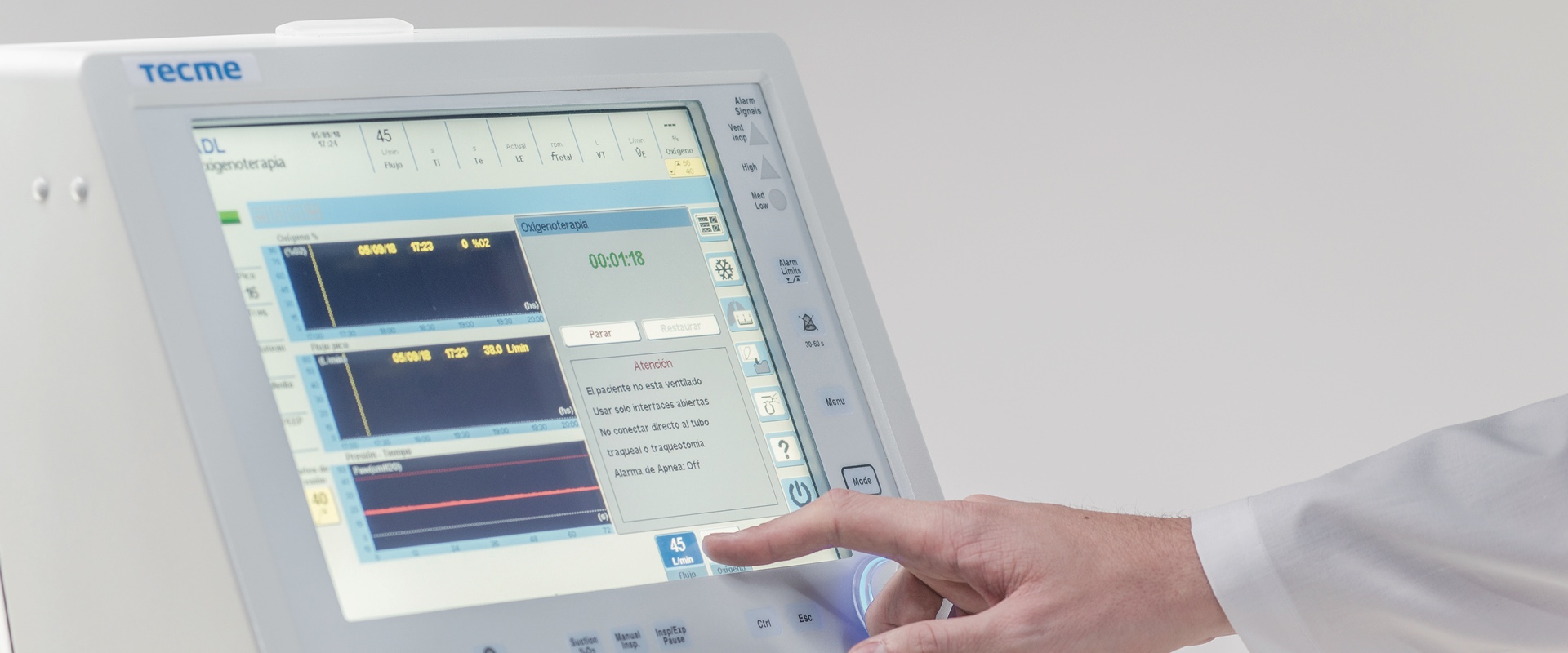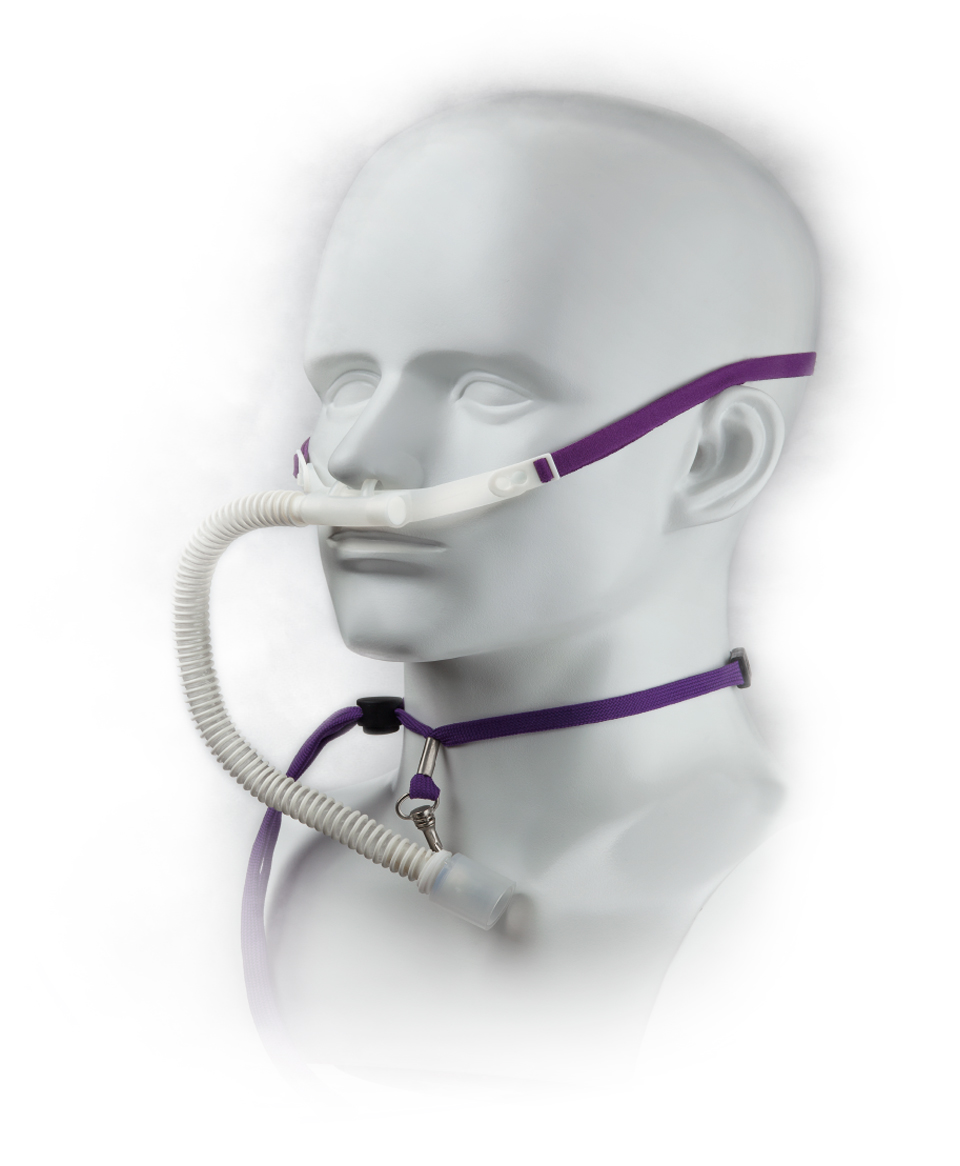![]()

Oxygen therapy administered through nasal cannulas or masks has always been the first approach to alleviate hypoxemia in patients.
Physiological Benefits:
High Humidity
CO2 Clearance
Controlled and predictable FiO2
CPAP-like Effect
A new feature available in our ventilators
In conventional oxygen therapy, the flow used is generally low, due to the fact that high flow rates without an appropriate humidity level may cause discomfort. Within this context, FiO2 received by the patient may also vary, depending greatly on the patient’s inspiratory flow rate. In this scenario, high-flow nasal cannula (HFNC) allow oxygen administration of up to 80 L/min with a high humidity level; solving the issues raised in the past. Advance, Neo and Ts* ventilators now have this feature, which allows an optimal transition between Invasive Ventilation, Non-Invasive Ventilation and High-Flow Oxygen Therapy.
Physiological Benefits
High Humidity:The Key to Tolerance
Dry and cold gases administered through the nasal cavity produce irritation and drying of the nasal airway mucosa, which reduces the tolerance to the method and increases the mucociliary clearance deterioration.
Using high humidity level HFNC allows tolerance of the administered flows and prevents the impairment of the cleaning and defense mechanisms of the airways. During the weaning period, it alleviates the larynx and trachea inflammation, preventing postextubation failure.
CO2 Clearance
During HFNC application, a reduction in the respiratory rate has been observed, as well as a reduction of the minute volume without PaCO2 increase, which suggests a more efficient ventilation, possibly originated by the CO2 clearance of the upper airway and reduction of dead space.
Controlled and predictable FiO2
In conventional oxygen therapy, FiO2 is highly variable, depending greatly on the patient’s inspiratory flow. Through the administration of flows that exceed the inspiratory peak flow, HFNC guarantees continuous and controlled FiO2.
CPAP-like Effect
Although HFNC is an open system, the stream flow it uses generates expiratory resistance, which creates a certain level of pressure in the upper airways, equivalent to CPAP levels of up to 5 cmH2O with a similar physiological effect.
Uses and Application
HFNC has been used for some years in practice, and the number of application areas has been increasing:
– Handling pre and postextubation periods.
– Hypoxemic and hypercapnic respiratory failure.
– Heart failure.
– Sleep apnea.
– As an alternative to Non-Invasive Ventilation.
– In caring for pediatric and neonatal patients.
Services
Excellent after-sale assistance that allows you to make the most of our devices.

